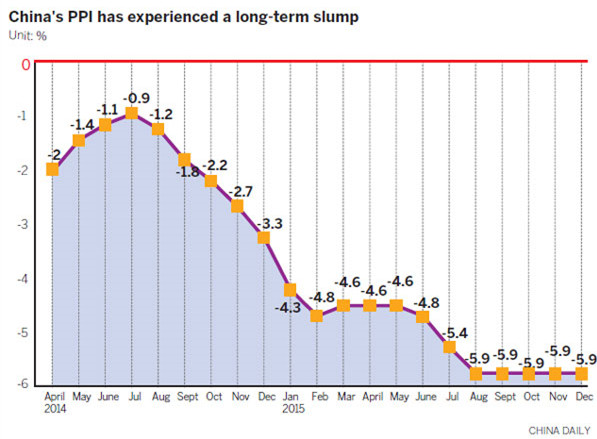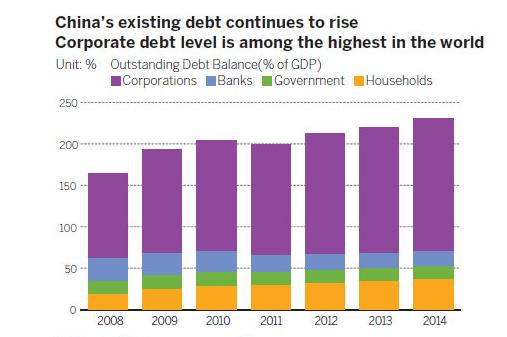Five objectives
The communique released after the Central Economic Work Conference in December provided a few clues about what the leadership means when it talks about supply-side reform, and five policy objectives outlined in the statement provide some answers.
The first was a commitment to shed the persistent industrial sector overcapacity that has plagued China for years, and in turn dragged the Producer Price Index down for 46 straight months (PPI slumped 5.9 percent in December from a year earlier).

However, the real process of shedding overcapacity has not really started in China because of persistent concerns among local governments. They worry that closing factories under their jurisdictions would result in losses in tax revenue, a slump in economic indicators and massive layoffs - many unprofitable State-owned enterprises are the single largest employers locally - and subsequently social unrest. As Wang Shuo, an economist at Caixin Media, put it, "keeping the zombie firms alive, while economically detrimental for the whole economy, makes every sense for rational local officials".
The conference urged the creation of conditions for "market-oriented bankruptcy procedure". It asked local governments to choose a "merger and acquisitions" approach while avoiding the "bankruptcy and liquidation" approach that inflicts more pain. Policies should be put in place to ensure disposal of bad assets and the protection of people who lose their jobs.
The second commitment was to reduce business costs. Although tax cuts will be an integral part of the program, experts cautioned that substantial tax cuts would be unlikely. Instead, the government is looking at reducing companies' operating costs, which include not only taxes, but also administrative fees, employees' social security payments and the cost of obtaining administrative approvals.



















































